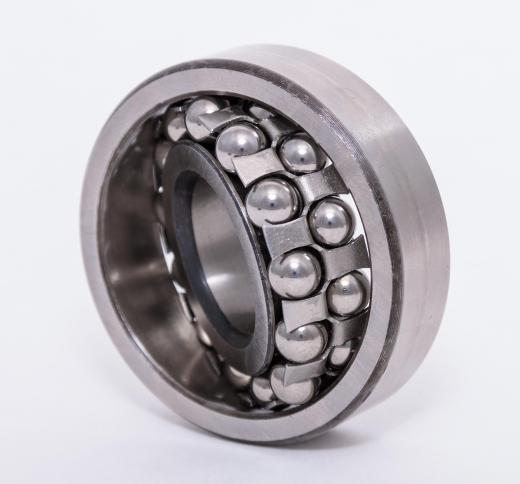Dry lubricants are solid chemical compounds, usually in the form of either a powder or film coating, that are used to reduce friction between moving parts. The three most popular types of compounds that are used for dry lubricants as of 2011 are graphite, C; molybdenum disulfide, MoS2; and polytetrafluoroethylene, (C2F4)n. Other types of solid lubricants commonly used include boron nitride, BN, and tungsten disulfide, WS2. The advantages that dry lubricants offer over standard lubricants made from petroleum products such as grease and oils include the ability to withstand significantly higher temperature without suffering thermal breakdown, as well as act as much thinner friction barriers and handle high pressures. Typical operating temperatures for dry lubricants range up to 662° Fahrenheit (350° Celsius).
The type of dry lubricant that is chosen depends on the specific application. Molybdenum disulfide, for instance, can withstand a heat level up to 2,012° Fahrenheit (1,100° Celsius), and some dry lubricants can withstand cold temperatures in the cryogenic range that would liquefy gasses such as nitrogen. When dry lubricants are applied as thin films, they are often used to coat ball bearings and the coating itself is durable at a thickness level of only 0.0001 to 0.003 inches (0.00254 to 0.0762 millimeters). Other extreme conditions that some dry lubricants can withstand include pressures of 250,000 pounds per square inch (17,237 bar) in a total vacuum environment where liquid oxygen storage is often done.

The main feature of these chemicals that gives them their incredible ability to reduce friction levels is what is known as their lamellar structure. This means that the particles within the lubricant form a series of overlapping lamellas, or parallel layers, at the molecular scale. These layers slide against each other preventing the two surfaces that the dry lubricants separate from coming into direct contact, even under extreme conditions. Several different compounds have been tested for their lamellar ability, and one example of a dry film lubricant that has been used for many years, aside from simple graphite, is talc, or hydrous magnesium silicate, Mg3(Si4O10)(OH)2.
The four main applications for which dry lubricants are used all involve extreme conditions, such as very high contact pressures and high temperatures. Under such conditions, graphite and MoS2 will survive, while liquid petroleum lubricants will not. Dry lubricants are also used primarily in machinery where there is reciprocating motion, which would squeeze liquid lubricants out of the main point of contact. Ceramics are the other area where solid lubricants have a special use, as they can be customized to have desired chemical reactions with the parts that they are protecting.
Two new compounds also being used as of 2011 include calcium fluoride, CaF2, and cerium fluoride, CeF3. These compounds are not as common because of the expense associated with them. Cerium fluoride is an example of this, as cerium itself is a rare Earth metal, and such metals as a rule are known to be fairly toxic substances. Little direct testing of toxicity for CeF3 has been done as of 2011, however, due to the difficulty in obtaining sufficient sample quantities for analysis.
